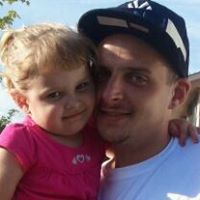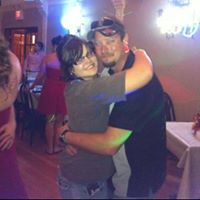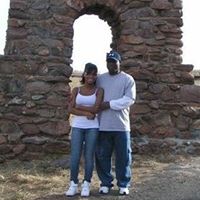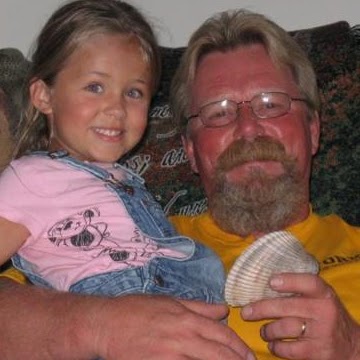Ronald E Compton
age ~89
from Southfield, MI
- Also known as:
-
- Ronald Edward Compton
- Ronald M Compton
- Ron E Compton
- Robert E Compton
- Compton Compton
- Geraldine Compton
- Maria Estrada
- Phone and address:
-
20076 Forestwood St, Southfield, MI 48076
2483583789
Ronald Compton Phones & Addresses
- 20076 Forestwood St, Southfield, MI 48076 • 2483583789
- Lewiston, MI
- Naples, FL
- Fraser, MI
- Spring Hill, FL
- Detroit, MI
- 20076 Forestwood St, Southfield, MI 48076 • 8103583789
Work
-
Position:Homemaker
Education
-
Degree:Associate degree or higher
Emails
Us Patents
-
Apparatus For Finishing Pistons And The Like And Method Therefor
view source -
US Patent:48670200, Sep 19, 1989
-
Filed:Jan 19, 1988
-
Appl. No.:7/145047
-
Inventors:Ronald E. Compton - Southfield MI
Bruce A. Brown - Rochester Hills MI
Donald S. Akhurst - Centerline MI
Douglas R. Myers - Utica MI
Robert W. Smith - Holly MI
Robert W. DeBruyne - Warren MI -
Assignee:The Cross Company - Fraser MI
-
International Classification:B23P 2302
-
US Classification:82 111
-
Abstract:A method and apparatus for finishing pistons (10) and the like from foundry-turned castings during one clamping operation to provide enhanced manufacturing productivity. Separate boring and turning modules (34, 24) of the apparatus are mounted on a primary base (18) and a grooving module (54) is mounted on a secondary base (72). The modules automatically groove the ring grooves (11), turn the complex shape of the skirt (15) and bore the wrist pin bore (13) through an ordered sequence of manufacturing steps. The piston stock is mounted for rotation on headstock and tailstock assemblies (82, 84). These assemblies are carried on the secondary base (72) which is slidably mounted on the primary base for movement into operative position with respect to the boring and turning modules according to the ordered sequence. The method and system improve piston quality while reducing manufacturing costs including saving factory floor space.
-
Apparatus For Finishing Pistons And The Like And Method Therefor
view source -
US Patent:47396849, Apr 26, 1988
-
Filed:Oct 31, 1986
-
Appl. No.:6/925438
-
Inventors:Bruce A. Brown - Rochester Hills MI
Robert W. DeBruyne - Warren MI
Robert W. Smith - Holly MI
Donald S. Akhurst - Centerline MI
Ronald E. Compton - Southfield MI
Douglas R. Myers - Utica MI
David R. Syrowik - Milford MI -
Assignee:The Cross Company - Fraser MI
-
International Classification:B23P 2302
B23B 706
B23B 306 -
US Classification:82 1C
-
Abstract:A method and apparatus for finishing pistons (10) and the like from foundry-turned castings during one clamping operation provide enhanced manufacturing productivity. Separate boring and turning modules (34, 24) of the apparatus are mounted on a primary base (18) and a grooving module (54) is mounted on a secondary base (72). The modules automatically groove the ring grooves (11), turn the complex shape of the skirt (15) and bore the wrist pin bore (13) through an ordered sequence of manufacturing steps. The piston stock is mounted for rotation on headstock and tailstock assemblies (82, 84). These assemblies are carried on the secondary base (72) which is slidably mounted on the primary base for movement into operative position with respect to the boring and turning modules according to the ordered sequence. The method and system improve piston quality while reducing manufacturing costs including saving factory floor space.
-
Cnc Turning Machine
view source -
US Patent:46533605, Mar 31, 1987
-
Filed:May 7, 1985
-
Appl. No.:6/731419
-
Inventors:Ronald E. Compton - Southfield MI
-
Assignee:The Cross Company - Fraser MI
-
International Classification:B23B 524
-
US Classification:82 18
-
Abstract:A turning machine is characterized by a new and improved control and mechanism for positioning the turning tool on the head. A CNC control issues command signals for selectively positioning the tool on the head. These signals are developed from an encoder which provides the instantaneous position of the rotating part being turned and from a program in the CNC containing information about the part. A closed loop control system receives these command signals and converts same into a control current for a linear motor which is the prime mover controlling the positioning of the tool on the head. The linear motor operates a carriage on the head and the cutting tool mounts on the carriage opposite the connection of the linear motor to the carriage. The carriage is a hollow bar guided on the head by sets of rollers which are cooperatively arranged to provide yieldably forceful constraint of the bar. The rolling action of the bar on the head provides a low friction, low inertia construction enabling rapid response to CNC commands.
-
Cnc Turning Machine
view source -
US Patent:RE339105, May 5, 1992
-
Filed:Jan 23, 1991
-
Appl. No.:7/645346
-
Inventors:Ronald E. Compton - Southfield MI
-
Assignee:The Cross Company - Fraser MI
-
International Classification:B23B 524
-
US Classification:82 18
-
Abstract:A turning machine is characterized by a new and improved control and mechanism for positioning the turning tool on the head. A CNC control issues command signals for selectively positioning the tool on the head. These signals are developed from an encoder which provides the instantaneous position of the rotating part being turned and from a program in the CNC containing information about the part. A closed loop control system receives these command signals and converts same into a control current for a linear motor which is the prime mover controlling the positioning of the tool on the head. The linear motor operates a carriage on the head and the cutting tool mounts on the carriage opposite the connection of the linear motor to the carriage. The carriage is a hollow bar guided on the head by sets of rollers which are cooperatively arranged to provide yieldably forceful constraint of the bar. The rolling action of the bar on the head provides a low friction, low inertia construction enabling rapid response to CNC commands.
Vehicle Records
-
Ronald Compton
view source -
Address:20076 Forestwood St, Southfield, MI 48076
-
Phone:2483583789
-
VIN:2D8HN54X29R668458
-
Make:DODGE
-
Model:GRAND CARAVAN
-
Year:2009
-
Ronald Compton
view source -
Address:20076 Forestwood St, Southfield, MI 48076
-
Phone:2483583789
-
VIN:2D4GP44L77R276474
-
Make:DODGE
-
Model:GRAND CARAVAN
-
Year:2007
Isbn (Books And Publications)

Resumes

Ronald Compton
view source
Ronald Compton
view source
Ronald Compton
view source
Ronald Compton
view sourceLocation:
United States
Name / Title
Company / Classification
Phones & Addresses
BIG RON'S BBQ & CATERING LLC
Director, President
DAY-STAR COMMUNICATIONS INC
Director, Secretary
SW BAY MANAGEMENT, INC
149 S Barfield Dr, Marco Island, FL 34145
B3 601 E Elkcam Cir, Marco Island, FL 34145
B3 601 E Elkcam Cir, Marco Island, FL 34145
Flickr
Classmates

Ronald Compton
view sourceSchools:
North Hunterdon High School Annandale NJ 1958-1962
Community:
Charles Derohn, Christopher Sakos, Donna Holbrook

Ronald Compton
view sourceSchools:
Riverdale Elementary School Riverdale MD 1972-1974, Hyattsville Middle School Hyattsville MD 1974-1977, Hyattsville Junior High School Hyattsville MD 1974-1977
Community:
David Mumper, Donna Abbott, Florence Abel, Ingrid Mcclam, Duane Allen

Ronald Compton
view sourceSchools:
St. Martin High School Ocean Springs MS 1986-1990
Community:
Patti Farris, Sharon Fox, Patricia Evans, Linda Russell

Ronald Compton
view sourceSchools:
St. John's Preparatory Collegeville MN 1957-1959
Community:
Frank Brown

Ronald Compton
view sourceSchools:
East York Collegiate Int High School Toronto Morocco 1961-1965
Community:
Gabe Nemeth, Ingrid Leineweber, John Simpson, Deb Collins

Ronald Compton
view source
Ronald Compton
view source
Ronald Compton
view source
Ronald Compton
view source
Ronald Compton
view source
Ronald Compton
view source
Ronald Compton
view sourceYoutube
Googleplus

Ronald Compton

Ronald Compton

Ronald Compton

Ronald Compton

Ronald Compton
Myspace
Get Report for Ronald E Compton from Southfield, MI, age ~89


















